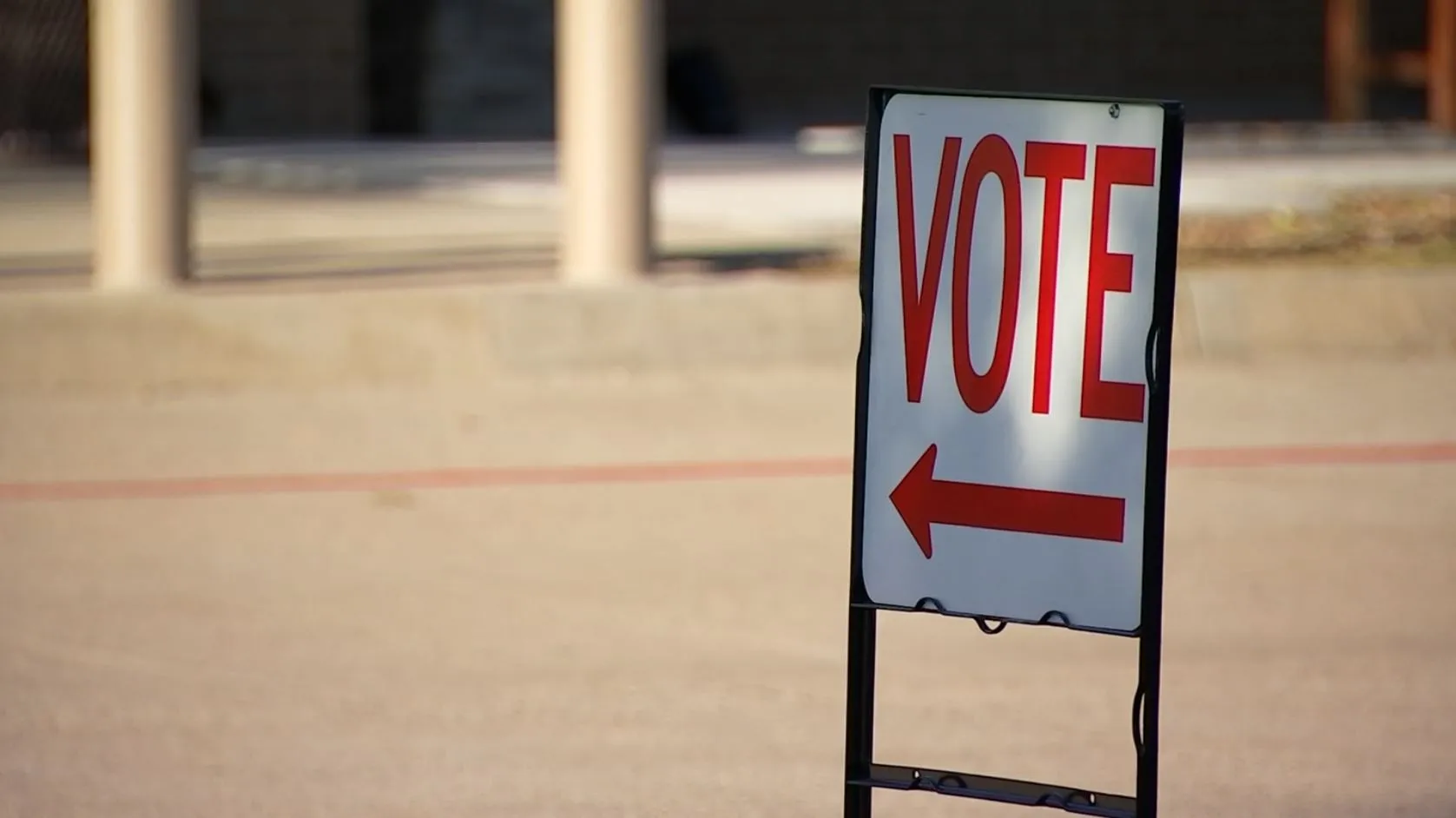Why is air quality expected to be so bad in Chicago and parts of Illinois Monday that it sparked an alert from the Environmental Protection Agency?
According to the National Weather Service, an air quality alert remains in effect for parts of the Chicago area until midnight Tuesday after the EPA in Illinois declared an "Air Pollution Action Day" for some counties, citing "elevated ground-level ozone."
But what caused the change in air quality and where will it be the worst?
Here's what to know:
Where has an air quality alert been issued?
The Action Day includes Cook, DuPage, Kane, Kendall, Grundy, Lake, McHenry and Will counties, the IEPA said. It will remain in effect until midnight.
Local
What is an Air Pollution Action Day?
According to NWS, "an Air Pollution Action Day is declared when weather conditions are such that widespread ozone and or particulate levels are expected to be at or above the Unhealthy for Sensitive Groups category of the air quality index for multiple days."
Feeling out of the loop? We'll catch you up on the Chicago news you need to know. Sign up for the weekly Chicago Catch-Up newsletter.
In Illinois, an Air Pollution Action Day is issued when air quality is forecasted to be at or above the Orange or “Unhealthy/Sensitive Groups” category for two or more consecutive days.
In Monday's alert, officials urged "ctive children and adults, especially people with pulmonary or respiratory disease such as asthma" to limit activities outdoors.
Why is the air quality so bad?
There are two major factors that can impact air quality in an area: ground-level ozone or particulate matter, also known as PM2.5.
The World Quality Index on Monday noted that ozone levels were expected to be the largest issue for the region Monday, though as of 9:30 a.m., the PM2.5 was the worst pollutant reported.
That's not unexpected, however.
"Even if the forecast is Orange (unhealthy for sensitive groups), there may be times during the day when air quality is OK for outdoor activities," AirNow.gov notes. "Ozone is often lower in the morning."
According to the Environmental Protection Agency, particulate matter, also called particle pollution, is the term for a "mixture of solid particles and liquid droplets found in the air."
"Some particles, such as dust, dirt, soot, or smoke, are large or dark enough to be seen with the naked eye. Others are so small they can only be detected using an electron microscope," the EPA states.
PM2.5 and ground-level ozone are among five major air pollutants regulated by the Clean Air Act, which also includes carbon monoxide, sulfur dioxide and nitrogen dioxide.
While it may seem unrelated, the weather can dramatically impact both ozone and particulate pollution levels.
As the Chicago area experiences dangerously hot temperatures and sunny skies, it's likely the weather will play a role in Monday's air quality.
That's because "sunshine can cause some pollutants to undergo chemical reactions, resulting in the development of smog" and "higher air temperatures can speed up chemical reactions in the air," according to NWS.
The EPA noted that "ground level ozone forms as a result of chemical reactions between nitrogen oxides and
volatile organic compounds," meaning "emissions from vehicles, power plants, and industrial sources chemically react with sunlight."
How bad is the air quality?
As of 6 a.m., Monday, according to AirNow, the Chicago area's Air Quality Index measured at "Moderate," which ranks as level two on a six level scale. As the day continues, the AQI is expected to reach level three, "Unhealthy for Sensitive Groups."
The AQI is measured based on five major air pollutants, including ground-level ozone, particle pollution and others. Ozone levels tend to be elevated during spells of hot weather, and more particle pollution occurs when residents use air conditioning units in their homes and businesses, officials say.
Those with pulmonary illnesses and other risk factors such as asthma, children and teens, older adults, and individuals who are routinely active outdoors for six or more hours per day should reduce exposure outdoors during the alert, according to officials.
Those who worry about being affected should look out for the following symptoms: wheezing, coughing, a fast
heartbeat, fatigue, chest pain and shortness of breath. If symptoms worsen, you should call your doctor or 911.
People are urged to take the following steps to reduce their contributions to air pollution, especially on action days, according to the state EPA.
- Limit Driving – combine errands, walk, or bike if possible.
- If driving, avoid idling, consolidate errands, and keep your vehicle and other engines
properly tuned. - Conserve energy to reduce energy demands.
- Use environmentally friendly household and cleaning products.
- Avoid using gasoline-powered equipment like lawnmowers and leaf blowers.
- Notify colleagues, friends, and family to help protect their health and encourage actions.
How to check air quality in your area
To check the air quality level in your area right now, click here.
What is an unhealthy air quality level?
AirNow said its air quality index determines the level of air pollution and the correlating health concerns.
"When AQI values are above 100, air quality is unhealthy: at first for certain sensitive groups of people, then for everyone as AQI values get higher," the website states.
Once levels reach above 300, they enter the highest level of concern known as "hazardous."
In total, there are six categories: green, or good; yellow, or moderate; orange, or unhealthy for sensitive groups; red, or unhealthy; purple, or very unhealthy; and maroon, or hazardous.
| Daily AQI Color | Levels of Concern | Values of Index | Description of Air Quality |
|---|---|---|---|
| Green | Good | 0 to 50 | Air quality is satisfactory, and air pollution poses little or no risk. |
| Yellow | Moderate | 51 to 100 | Air quality is acceptable. However, there may be a risk for some people, particularly those who are unusually sensitive to air pollution. |
| Orange | Unhealthy for Sensitive Groups | 101 to 150 | Members of sensitive groups may experience health effects. The general public is less likely to be affected. |
| Red | Unhealthy | 151 to 200 | Some members of the general public may experience health effects; members of sensitive groups may experience more serious health effects. |
| Purple | Very Unhealthy | 201 to 300 | Health alert: The risk of health effects is increased for everyone. |
| Maroon | Hazardous | 301 and higher | Health warning of emergency conditions: everyone is more likely to be affected. |
Chicago weather today: Temperatures will feel like 100 degrees
In addition to the air quality alert, Monday is expected to be a muggy and hot day, continuing a long stretch of 90-degree temperatures and even higher heat indices, the NBC 5 storm Team said.
MORE: Chicago's public pools will open for the season on Monday – with a major change
"Every single day this week will feature temperatures in the 90s and high humidity as well," NBC 5 Meteorologist Alicia Roman said.
The forecast Monday across the Chicago area calls for a high temperature of 96 degrees -- which could tie the record for the Chicago area, set in 1957, Roman said.
"No lakefront cooling today," Roman stressed.
Additionally, humidity levels Monday will straddle the line between "muggy" and "extreme," Roman added, noting dewpoint temperatures in the 60s and 70s.
"Hydrate, hydrate, hydrate," Roman warned.
MORE: As temperatures soar, here's how to protect yourself from heat-related illness
Monday could also see isolated afternoon storms as the day heats up, Roman said.
"There's a low-end chance for a storm with the heating of the day," Roman said. "Not everyone will see it."
Locations that do see storms could see quick, heavy downpours, Roman said.
Temperatures in 90s and isolated storm chances will continue through the rest of the week, Roman said, with relief not arriving until the weekend as a cold front passes through.
At that time, more showers and storm chances are expected, Roman said, with temperatures dipping back down into the mid 80s Sunday.



